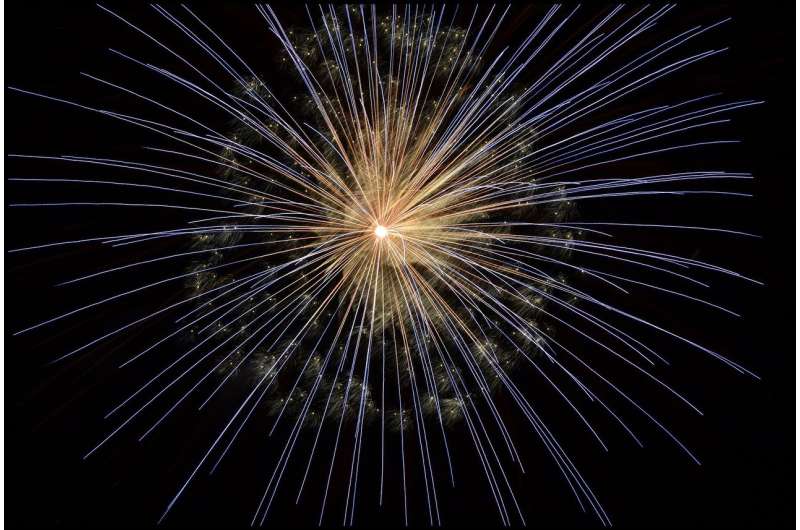July Fourth brings some of the year's worst air pollution, thanks to fireworks

Americans' fervor for Fourth of July fireworks has some unfortunate side effects.
But there's also a more widespread hazard from the yearly outburst of pyrotechnics: It spikes air pollution so sharply it becomes dangerous for everyone to breathe.
Independence Day and July 5 consistently have some of the worst air quality of the year. With so many fireworks going off at once, levels of fine-particle pollution—a stew of tiny, lung-damaging specks of toxic soot, smoke and ash known as PM2.5—surge several times higher than federal health standards across Southern California, air monitoring data show.
Pollution levels jump sharply around 8 or 9 p.m. the evening of the Fourth of July, around when it gets dark, reaching their peak late in the night. The unhealthy pall hangs in the still, nighttime air and lingers through the following morning—a kind of hazy hangover from the night's revelry.
In downtown Los Angeles last year, fine particle pollution jumped above 300 micrograms per cubic meter—more than eight times the daily average health standard of 35—and remained elevated through the following morning.
The phenomenon isn't unique to L.A. A 2015 nationwide study by U.S. government scientists found that on average, concentrations of fine-particle pollution for the 24-hour period beginning at 8 p.m. on the Fourth of July are 42 percent higher than on other days.
Some authorities say pollution is yet another reason people should opt for professional pyrotechnics displays and not add to the problem by setting off their own personal fireworks, which are illegal in many communities, including the city of Los Angeles.
"We're not telling people to not have fireworks or anything, but we do want to let people know that there's usually a heightened health impact starting in the evening of the Fourth and into the morning of the 5th," said Kevin Durkee, a quality assurance manager with the South Coast Air Quality Management District in Southern California.
Fourth of July pollution may pose even greater risks compared with typical smog because it contains higher concentrations of toxic metals like barium and copper that are used in fireworks to generate bright colors, said Jun Wu, a professor of public health at the University of California, Irvine who has studied the effects of air pollution.
"Those vulnerable populations may have a higher burden than usual," Wu said. "It's not just during the half an hour of fireworks, these particles float in the air for a few days or even a week."
To protect yourself, Wu and others suggest watching fireworks shows away from any plumes of smoke and keeping children's windows closed while they sleep on the evening of July Fourth.
©2018 Los Angeles Times
Distributed by Tribune Content Agency, LLC.




















